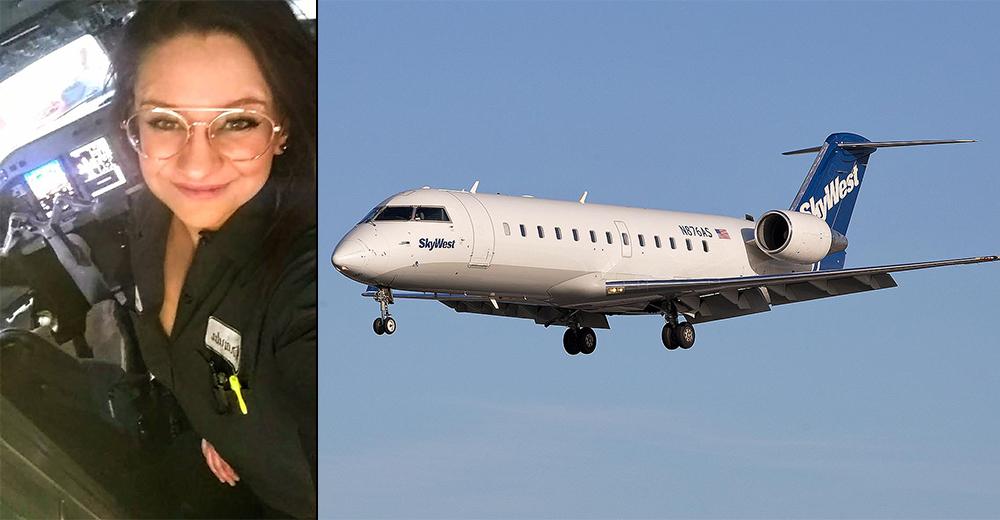
With Boeing’s prediction that the aviation industry will need 610,000 new maintenance technicians over the next decade, it is crucial that airlines and MROs find ways to reach new potential talent. Miranda Wales, a maintenance mechanic at SkyWest Airlines, speaks with Aviation Week about her transition from forensic science to MRO and what the industry could do to engage better with youth and women.
What interested you in the MRO industry and what was your journey like to become a mechanic?
My dad owned and ran an excavation business where I frequently assisted with operating heavy machinery and snow removal. Ever since I can remember, I have always loved being in the shop with my dad while he was working on a vehicle or equipment, especially when he would let me help him with parts of the repairs. But while I always wanted to know how everything worked down to the last detail, and I would sometimes try to build things by myself in the shop bay, my dad couldn’t quite explain things to the point where I could fully understand how everything worked, so I always found it to be extremely frustrating not being able to do more.
I initially earned my bachelor’s degree in integrative sciences with a concentration in forensic science, and I applied for numerous forensic science positions. Unfortunately, I hated all of the forensic positions I shadowed, and I never once held a job in the forensic science field. Instead, I spent eight years working as a bartender and server, but by the age of 26 I was nowhere near achieving my dad’s expectations of me, much less my own. [One] day I was driving to work and happened to hear a radio ad for Pittsburgh Institute of Aeronautics (PIA). PIA Hagerstown was about two hours away from my residence at the time, so I reviewed the curriculum, scheduled a campus tour and made this the start of my new path.
You were at the Pittsburgh Institute of Aeronautics during the COVID-19 pandemic. What was it like studying to become an aircraft mechanic during a pandemic and what were the biggest challenges?
Attending PIA during the pandemic presented numerous challenges. For example, social distancing requirements often forced us to learn remotely or in spread-out groups in large and loud spaces. Also, there was the unexpected complication of not being able to eat on campus, which led to us frequently eating our lunches alone in our cars. And in cases where students were sick or unable to attend a class in person, they could watch the lesson from home, but they were unable to ask the instructor questions directly, which was quite frustrating.
While COVID-19 presented numerous challenges during my time at PIA, my most devastating moment was completely unrelated to the pandemic: I failed my very first test. In all the time I had previously dedicated to my education, including my bachelor’s degree, I had never once studied for anything. Ironically, this left me struggling to finally learn beneficial study habits at the age of 27. But I did, and my efforts paid off when I graduated with my A&P license—or my “lifelong license to learn”—in 2021.
What is your position at SkyWest and what type of maintenance work do you do?
My position at SkyWest is within the maintenance department as a maintenance mechanic. Our SkyWest hangar in Colorado Springs is a maintenance hangar, meaning we are prepared to perform any and all maintenance pertaining to [Bombardier] CRJ-200s, 700s and 900s, as well as the ERJ-175. Mechanics from our hangar also frequently take road trips to other hangars to perform maintenance tasks that the requesting hangar is not equipped to perform. Our hangar is known for our troubleshooting skills that lead to successful repairs, and I have been personally recognized by my leads and supervisors for being skilled in troubleshooting as well.
My personal workload varies from day to day. In one week, I could do several service checks, 100-hr. inspections or A checks; troubleshoot a fire, brake or water system; fan blade replacement; selector or check valve replacement; or replace a fuel tank sensor. I would never be able to list everything, and there is so much more that I still have to learn and experience.
What does the MRO industry need to do to attract and retain more women to the workforce?
In my opinion, it is difficult to say because people have their own unique perspectives, experiences and preferences that contribute to the criteria they will use in their decision-making process.
To me, no individual can be successful in his or her pursuits unless he or she is pursuing something he or she truly wants, because only then will that person exhaust every effort to achieve success. So maybe the solution is introducing young women and girls to more stories and images that make them want to be in the MRO industry, and also helping them see that society wants them in the MRO industry. In that case, it could be time to retire the classic image of Rosie the Riveter and instead flood the news and social media with more relatable real-life images of female A&Ps at work today.
Considering the age gap in the MRO industry and the fact that it will need to recruit many younger workers to replace recent and upcoming mechanic retirements, how do you think companies can draw interest from young people?
I think the MRO industry should focus on holding workshops or re-implementing shop classes in public schools to expose younger people to MRO and other trade skills earlier in their career exploration process. In today’s society, young people are unlikely to experience any type of skill trade, especially if neither parent has any exposure or knowledge of the field.




